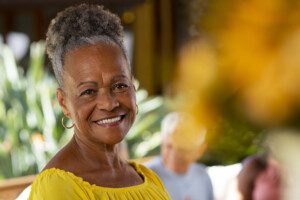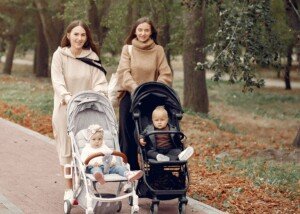
A first of its kind study looked at black low-income adults to explore fast walking’s effect on their health and longevity.
Black individuals are underrepresented in many studies relating to health.
Drawing on data from nearly 80,000 individuals enrolled in the Southern Community Cohort Study — primarily black, low-income adults from 12 southeastern U.S. states — the study reaffirms that walking, particularly at a brisk pace, is strongly associated with improved longevity.
Published in the American Journal of Preventive Medicine, lead researcher Dr. Wei Zheng, professor in the Division of Epidemiology at Vanderbilt University Medical Center, explains the following:
Although the benefits of daily walking have been widely documented, few studies have explored how walking speed influences mortality in blacks.
What were the findings?
Just 15 minutes a day of walking is linked to about a 20% drop in all-cause mortality, says the paper.
But there’s much more to this than just time spent walking.
Dr. Zheng explains that “more than three hours of slow walking each day provided a smaller reduction in death risk.”
This proved to be the case even after lifestyle and health related variables were adjusted for.
How was this study done?
Participants reported how many minutes per day they typically spent walking slowly — for instance, during routine activities like moving around at work, walking a small dog or performing light chores.
But they also reported how often they engaged in faster-paced walking, such as when walking deliberately for exercise, walking a big dog or hurrying around on the job.
Researchers tracked participants’ mortality data by linking their records to the National Death Index.
More on the Results
Fast walking appeared to have a protective effect across all causes of death, but the most significant impact was seen in reducing deaths due to cardiovascular conditions.
Notably, the benefit of fast walking was evident regardless of how much other physical activity participants performed in their free time.
In other words, even those who already engaged in some leisure-time exercise still saw additional benefits from incorporating brisk walking.
Brisk Is Where It’s At
Don’t dawdle when you walk; pick up the pace!
From a cardiovascular standpoint, brisk walking improves heart function by boosting cardiac output and oxygen delivery, which helps the heart work more efficiently.
It also plays a role in managing body weight and lowering common risk factors like high blood pressure and cholesterol levels.
How to Insert Faster Walking into Your Lifestyle
Whether you’re black, white, tall, short, heavy, skinny, old, middle age or younger (yes, young adults, pay attention here!), you can easily integrate brisk walking into your daily life.
• Never assume that a distance is too short to quicken your pace, such as the length from your bedroom to your child’s bedroom.
• Every segment that’s walked COUNTS, be it just to your mailbox down the driveway, from the front yard to the backyard, from your car to the store entrance or from one office to a nearby one at the workplace.
• If you have a dust-collecting treadmill in the house, start using it.
• Even a few minutes here and there of brisk walking on the treadmill will make a difference, as long as you do this nearly every day. Don’t hold on; that’s cheating; pump the arms.
• Walk your small dog faster. They’ll benefit too!
• Push the toddler stroller faster. Ever notice how slowly most people push a stroller? Make sure the stroller is designed for a perky pace.
• Pick up the pace inside the mall or along the beach.
• Take a fast walk around the block a few times.
• Walk faster on the job whether it’s indoors or outside.
• Wear comfortable shoes as much as possible for unexpected opportunities for brisker walking segments.
Final note: The study wants to remind people that walking is cheap and highly accessible; get moving!
![]()
Lorra Garrick is a former personal trainer certified by the American Council on Exercise. At Bally Total Fitness, where she was also a group fitness instructor, she trained clients of all ages and abilities for fat loss and maintaining it, muscle and strength building, fitness, and improved cardiovascular and overall health.









































